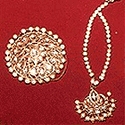Continuing from as far back as can be remembered the fibre of hemp bark (nalu) has been extracted and processed in Nepal. It is used for a multitude of purposes including the making of strong ropes and bags, and the weaving of namlos – headbands to support baskets – and dumlos – used to tie or tame animals and many other purposes. Hemp, a tropical plant that grows to a height of about 7 to 8 feet is cultivated extensively in the eastern terai region of Nepal. Its bark is thick and is the raw material source of the fibre. It is also commonly called jute/ nalu fibre.
RAW MATERIAL
The hemp is a robust, erect annual herb (1-5 m tall) which can grow in a wide range of altitudes, soils, and climates. The plant is probably most widely known as a source of narcotics but in fact it has three main products, each of which is locally important – these are:
- white bast fibre from the stem;
- oil from the seeds &
- narcotics
The various products require different conditions for optimum quality. A mild, humid temperate climate, such as may be found in some hill regions, is best for fibre production.
PROCESS & TECHNIQUE
The green hemp plant is cultivated in a manner that is similar to rice. The diameter of its stem is about half an inch and this is the part that is used for fibre production, while its green and yellow leaves and side stems are chopped of with a scythe.
Using primitive techniques the bark is fermented in order to convert it into fibre. The stems are made into bundles, which are immersed in water and kept down with mud and turf. The bundles are submerged until they ferment and start to emit an odour, at which stage they are pulled out and debarked.
The inner sticks (sita) are kept aside and dried in the sun, while the outer bark – which is completely fibrous – is washed in water and dried in the sun. After being dried the fibre is ready for use.


